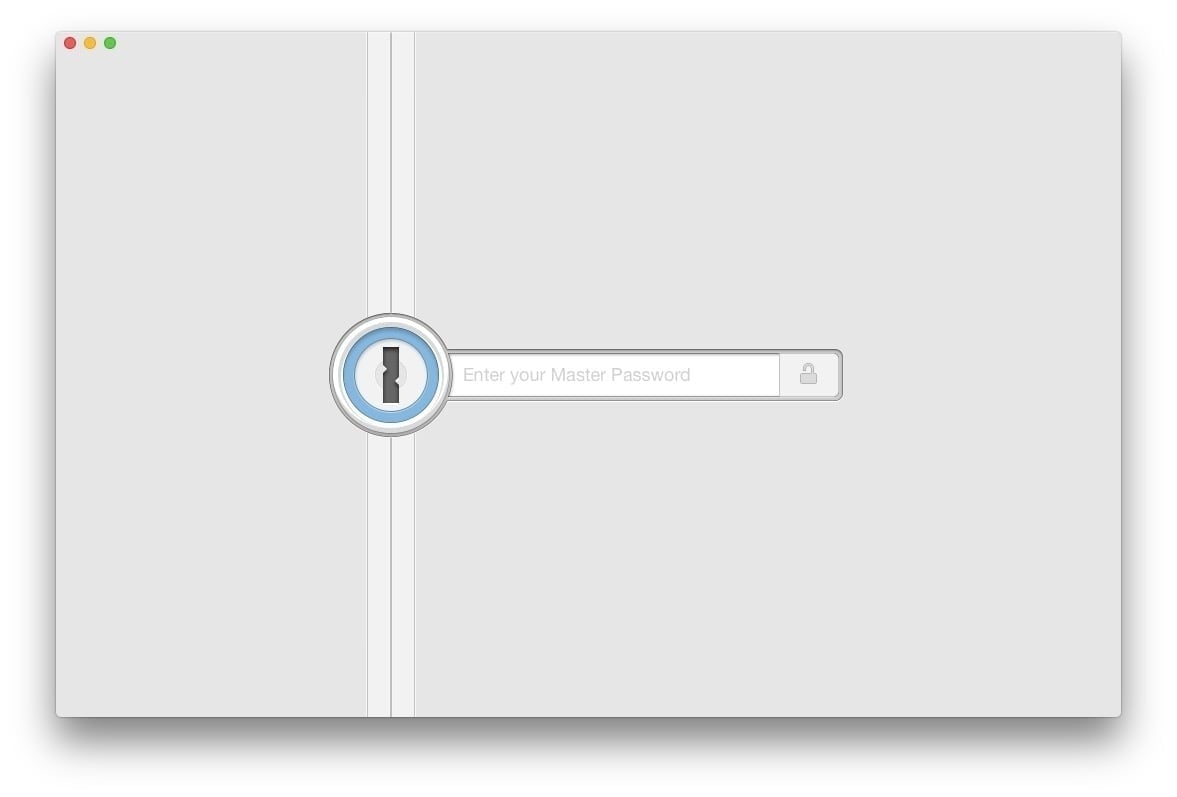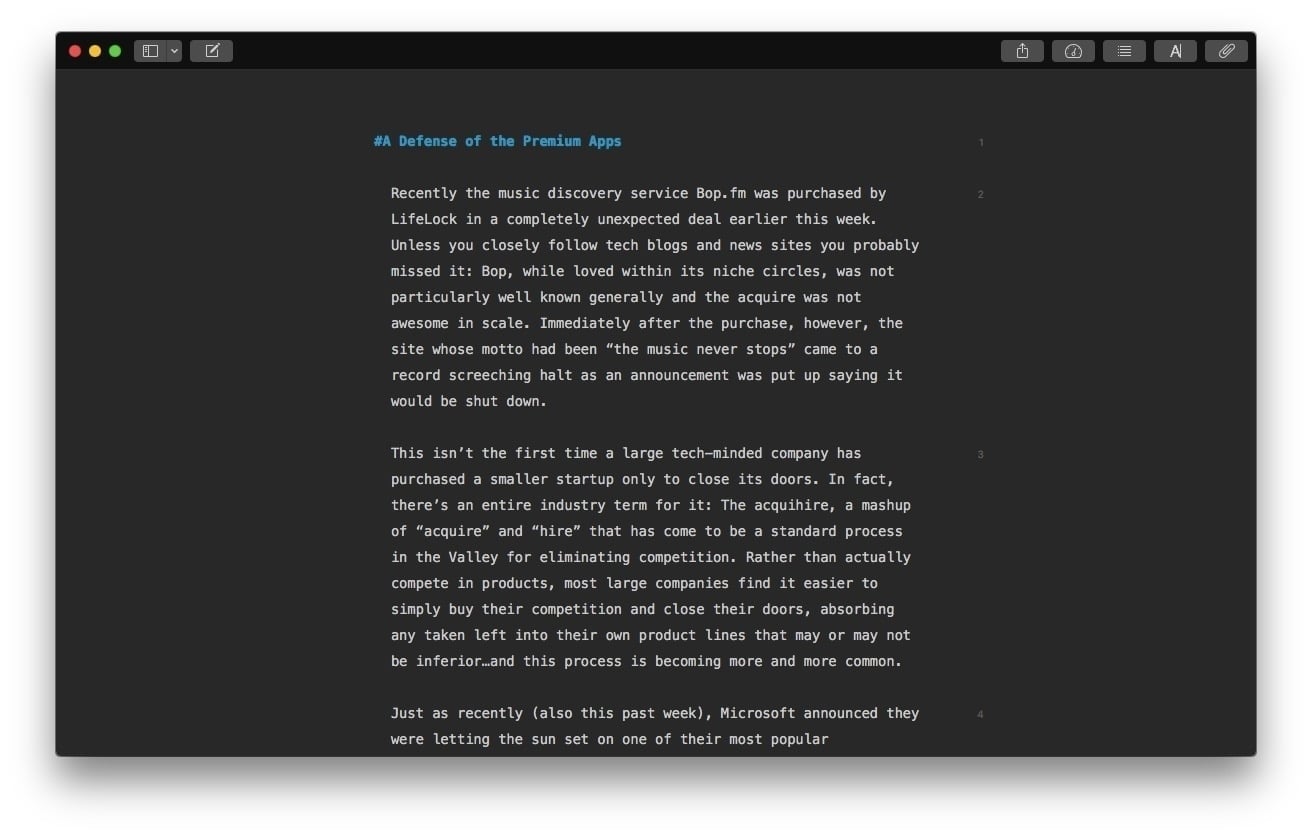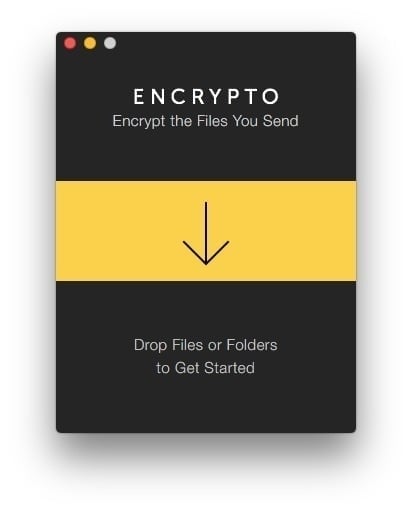November 1, 2015
A Defense of the Premium Apps
Recently the music discovery service Bop.fm was purchased by LifeLock in a completely unexpected deal earlier this week. Unless you closely follow tech blogs and news sites you probably missed it: Bop, while loved within its niche circles, was not particularly well known generally and the acquire was not awesome in scale. Immediately after the purchase, however, the site whose motto had been “the music never stops” came to a record screeching halt as an announcement was put up saying it would be shut down.
This isn’t the first time a large tech-minded company has purchased a smaller startup only to close its doors. In fact, there’s an entire industry term for it: The acquihire, a mashup of “acquire” and “hire” that has come to be a standard process in the Valley for eliminating competition. Rather than actually compete in products, most large companies find it easier to simply buy their competition and close their doors, absorbing any taken left into their own product lines that may or may not be inferior…and this process is becoming more and more common.
Just as recently (also this past week), Microsoft announced they were letting the sun set on one of their most popular acquisitions, Sunrise Calendar. A popular productivity app for multiple platforms, Microsoft had bought the company earlier this year in February. At the time, it seemed like Microsoft was becoming a different beast from the acquisition-happy monster of their early day, continuing to update the Sunrise app independently of their own, often competing, products. In fact, some of Sunrise’s best features were released during this period and it looked like their future was bright. Not so much anymore.
Of course, Google is known for this kind of behavior, often making a near yearly tradition out of upsetting their users by shutting down what most would consider popular and even profitable businesses. Motorola was bought, then promptly sold (though not shut down); Reader was shuttered after years of updates and a huge user base had been built up; Sparrow, the popular email client that started the trend of minimal email clients and would foster the famous Mailbox app and its ilk was quickly shelved after purchase; Timely, a smart calendar app that would intelligently organize reminders and events was also shut down within months of being acquired by Google and its team was re-tasked to Google’s own Inbox project.
Even Apple has flexed its muscles in this arena, often buying and shutting down potential competitors. Remember LaLa, the online music streaming service and storage locker long before services like Apple Music exploded into the mainstream? Yeah, neither does anyone else. Purchased by Apple in 2009, LaLa was promptly shut down and its users given an iTunes gift card worth a fraction of their libraries.
So all this has me wondering: Which great service is next to be closed? If Sunrise is fair game, what’s keeping Microsoft acquired Wunderlist alive? If Timely and Sparrow could go down, what’s stopping Google from axing Waze? This brings me to my main point and one which has been cliched again and again: You get what you pay for.
 1Password
1Password
Free apps are great in a way. They grant people great options to work with powerful software that otherwise would cost a fortune. The problem is people tend to forget that these companies aren’t just sitting around pumping out free software because they love to help humanity. The money has to come from somewhere and often times this is in ad revenue. Privacy issues aside, it’s important to understand that using a free app means a few things. First it means that you rarely control your data. Some apps, like ones developed under an open source license, may be excepted from this rule, but an app like Evernote or Wunderlist is not. When you sign up you hand over a certain level of your rights to that company and should they ever decide that their ad profits from this software are shrinking, they can kill it off without any further ado. Second, many of these products are experiments, ways for companies to dabble with revenue streams and compete in different sectors, A/B testing their users while at it. Since the money isn’t coming from you, there’s not a lot of incentive to actually listen to their users. Instead, they are slaves to the advertisers and what they want from the platform. This shifts the product ever so slightly.
 Fantastical 2
Fantastical 2
Getting around this, though, is rather simple: Stop using free software. It’s unlikely to actually happen (software isn’t cheap), but if you want stability in your app life, paid apps are more likely to stick around. Consider the company CulturedCode. Based out of Europe and built with a team of only 11 people, their primary product Things has remained one of the most widely regarded task management apps ever to hit Apple’s platforms. They were one of the original 500 apps on the App Store, one of the first iPad optimized apps, and one of the first apps on the Apple Watch at launch day. And all this from a company a mere fraction of the size of their biggest competitors. True, they don’t support many platforms and true, they lack certain functionality that other apps have (an API would be really nice in case CC is reading this), but quality over quantity and their quality of software is beyond impeccable. But with high design comes a high price and Things lives up to both of those standards. Lacking a universal app means Things will cost $10 per iOS platform. Add that to a whopping $50 for the Mac app and you’ve spent somewhere around $60-70 to complete your ecosystem of task management apps. And they aren’t alone in this space. Other productivity apps that are well designed and coming from small teams include Omnifocus (up to $160 for cross platform support) and 2Do ($65 for iOS and OS X). And this is not unique to productivity apps. I’m currently typing this blog post using Ulysses, a gorgeously designed markdown editor designed for writers, that clocks in at $50 a copy (and that excludes iOS support). Clear, a wildly popular Reminders alternative, is $15 for cross platform support. Ember, a beautiful screenshot clipper, is $50. Pinboard, a popular cloud bookmarking service is $11. My calendar app of choice, Fantastical, hits $55 for cross platform support. And these aren’t even specialty tools. As a developer, I can easily spend several thousand dollars on tools to help me in my work ranging from code editors like Coda, to FTP clients like Transmit, to GIT managers like Tower, to Bootstrap builders like Blocs to HTML animators like Hype. Software just ain’t free, and good software can be downright expensive.
 Ulysses
Ulysses
And yet the benefits are obvious once you take the plunge and actually try it. Switching to paid software greatly improved my life in ways I never thought it could. Elegantly designed, always improving and thoughtfully added features that come straight from community suggestions all come together to create a beautiful experience you just don’t get with free software. The communities for paid software are often smaller and closer knit, offering top-tier support even from small companies and rich user feedback. The development is also more attentive to detail, focused more on shipping quality software rather than just shipping for the sake of updates. True, they develop more slowly than their brand-name counterparts (Things 3 has been in development since 2011 and has yet to be released), but the end result is almost always far more stable, reliable and thoughtful than the stuff pumped out by lesser entities. And sometimes, paid software can trickle out into the world of free as well. MacPaw, for example, builds several suites of Mac utilities that are paid and well worth it, but recently released a small encryption utility for free based on principle. Of course, it integrates best with their larger encryption suite, but it can be used on its own and is quite powerful and beautifully designed.
 Encrypto
Encrypto
This is a similar principle that Apple is attempting. Apple believes that your purchase of a Mac should be more than just buying incredible hardware, but should be akin to buying an entire experience, crafted to perfection. Consequently, Apple places a very value on their own in house software that you usually won’t find in other companies. While most PCs come loaded with “crapware” that is promptly uninstalled (Microsoft’s Signature program is aimed at getting rid of this problem), Apple tends to preload their computers with software you actually want to use. It’s so good, in fact, that many developers opt to not replace it entirely, but rather to build upon it and make it a little better and feature rich. Things, for example, integrates with Apple’s Reminders app and extends its functionality. Fantastical integrates directly into Apple’s Calendar app. These are examples of perfect software design and is part of what makes Apple so great. Their software is here to stay, along with their hardware, and you can be sure it won’t be killed off on a whim.
Now one very, very great exception to this rule, though, is Facebook. Facebook also makes large acquisitions of small software startups but unlike other big companies, Facebook tends to do so only so they can access resources and help eliminate compilation in an effective way. They almost always allow these companies to continue to act independently and in fact, often inject these startups with new resources to help them succeed even more. Instagram, WhatsApp, Moves, Occulus and host of other companies have all been acquired by Facebook but allowed to continue in their own line of work, operating independently with minimal oversight. The end result has been polished products that have lasted for years and continue to grow. This is healthy product development and healthy competition. This is how innovation can still grow, even in the face of acquisition. I think all companies can and should take cues from how Facebook does business in this area, but in the end, you always will get what you pay for.
Previous post The Need for a New Programming Paradigm I recently had the pleasure of tutoring a new programmer through a college programming class. The class covered some intermediate constructs from Next post A Robot is Going to Take Your Job…and You’re Going to Thank It A casual stroll through the popular science section at a Barnes and Noble today and you’ll notice an influx in titles relating to our future with